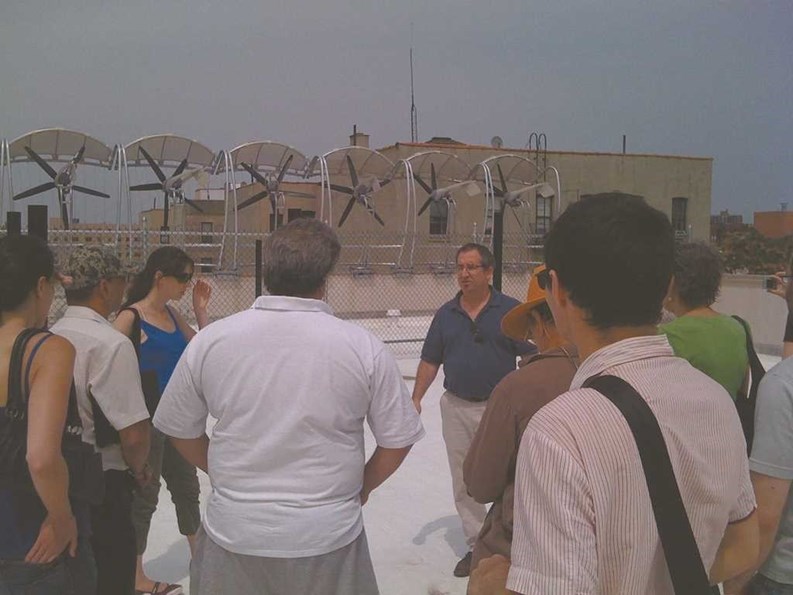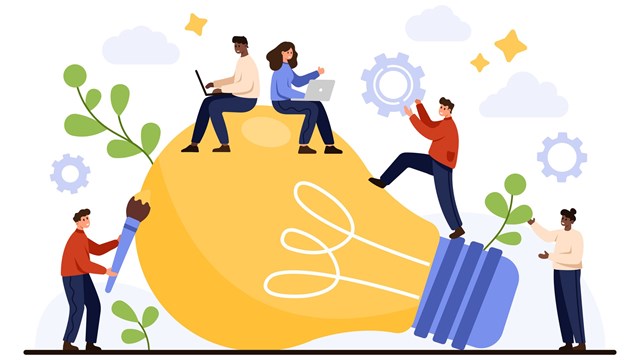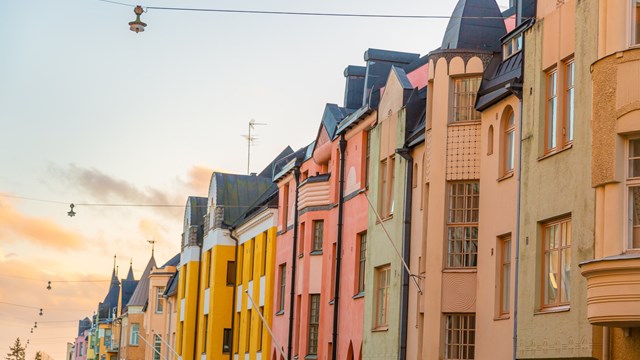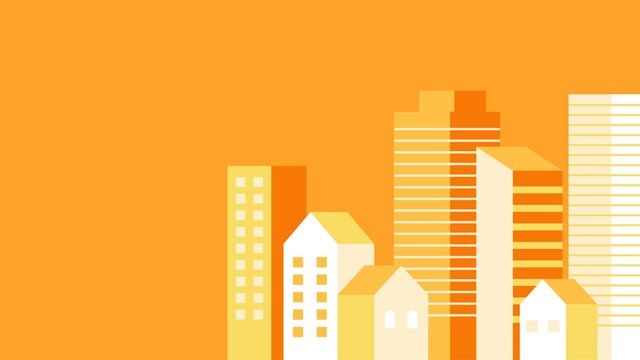The buzzword in energy today is “sustainability.” More than the installation of the sexiest new technology, sustainability is a melding of renewable energy and energy efficiency. It’s a blend that forms the foundation of the Northeast Sustainable Energy Association (NESEA).
For more than three decades, NESEA has “supported and inspired” a burgeoning network of professionals who are dedicated to the widespread acceptance and use of sustainable energy in the northeast. Through NESEA, architects, engineers, educators, builders, energy consultants, renewable energy manufacturers and installers, facilities managers and planners have come together in the effort to bring healthy, efficient buildings and transportation systems powered by clean, renewable energy into everyday use.
Unlike many organizations that target specific industry groups, the Greenfield, Massachusetts–based NESEA has found that the diversity of its membership — and the collaboration that develops from that diversity — is the key to its success.
Support for Professionals and Homeowners
“Our role is to support the professionals who are involved in making our building stock more energy-efficient and in optimizing the use of renewable energy,” says Jennifer Marrapese, NESEA executive director. “We’re a group of practitioners who work at a very high level;
A chapter of the American Solar Energy Society, NESEA was launched in 1974 with a focus on solar energy. Known at that time as the New England Solar Energy Association, the group held conferences, published a newsletter and became a network of people interested in technological developments, market trends, and government policies related to energy consumption. In the 1980s, as NESEA banded with similar groups throughout New York and the Mid-Atlantic states, the expanded organization morphed into the Northeast Sustainable Energy Association.
In the New York area, the local chapter of GreenHomeNYC works in collaboration with NESEA to promote sustainable energy solutions, projects and programs. Steven Lenard, a city planner with the New York City Department of City Planning (DCP), is the GreenHomeNYC liaison to NESEA. He concentrates mostly on the Greenpoint and Williamsburg neighborhoods of Brooklyn. Previously, Lenard had been a contractor with the Environmental Protection Agency involved in hazardous materials assessment and site cleanup.
"I coordinate communications between NESEA and GreenHomeNYC," Lenard explains. "I am also the representative on the NESEA chapter caucus, which meets several times a year, both physically and by conference call. I also serve as treasurer on the NESEA Board though that is not part of being the GreenhomeNYC chapter representative."
The two organizations generally work together toward the same goals but are not totally interconnected, says Lenard. "GreenHomeNYC is fairly independent and most of our programs are independent of NESEA but we are working to develop more integrated programming. GreenHomeNYC's programming is oriented toward the public as well as professionals, while NESEA is primarily focused on professionals," he says.
GreenHomeNYC programming consists of monthly public forums, educational seminars and the annual New York City Green Buildings Open House Tour combined this year with the New New York D-I-Y Street Festival. "The New New York" Street Festival will be a day of action complementing the Green Buildings Open House Tour (GBOH), filled with hundreds of 'do-it-yourself' activities such as learning how to install and plant a green-roof, watching worms wiggle and transform organic matter into dirt, completing an energy audit, and learning how to prune street trees. Exhibitors will showcase cool, new environmental products and technologies, and The Hudson Companies, Inc. will be offering tours of Third + Bond, a newly built condo in Carroll Gardens, Brooklyn, designed to LEED-Gold and EnergyStar standards.
Since 2003, GreenHomeNYC has organized the NYC Green Buildings Open House as a part of Northeast Sustainable Energy Association’s (NESEA) Green Buildings Open House and the American Solar Energy Society’s (ASES) National Solar Tour. New York City's open house tour, though, differs a little bit from the GBOH tour in New England, says Lenard. "The tour, which will take place on October 2nd this year, works slightly differently in New York City because the buildings and environment are different than in the rest of the NESEA territory," he says. "The buildings are generally larger and have unique security concerns, so while most NESEA GBOH sites are open for most of the day and people can drop by any time, we schedule a specific time for people to visit a building and provide for an owner, operator, or professional who was involved in design or construction to provide a guided tour. In the spring we do a tour series with a higher level of service, where we organize multiple building tours with transportation and lunch included."
This year's GBOH will take visitors throughout the five boroughs of New York City to view examples of energy-saving solutions; photovoltaic and solar hot water technology and integration; water-saving fixtures and appliances; green roofs; solar heating (”passive solar”) techniques; allergy/asthma-sensitive building materials; and various kinds of green materials including paints, insulation, carpeting, renewably-harvested wood products, reclaimed and recycled materials. Visit http://greenhomenyc.org/events/nyc-green-buildings-open-house for more information.
Educational Efforts
Besides the public forums and the GBOH tours, education is a big component of both NESEA and GreenHomeNYC. "We promote and facilitate NESEA programs locally, such as education training for K-12 teaching professionals," Lenard says. "An example would be the Wind Wisdom trainings we did last April at Solar One in Manhattan and the Greenbelt Nature Center in Staten Island. In that program, K-12 educators could get free curriculum kits and training to teach lessons on wind energy. This was funded by NYSERDA. Another would be the sustainability workshops that NESEA held a few years ago in which Marc Rosenbaum (a world-renowned builder of Zero-net-energy homes and a terrific speaker) gave a day long workshop. For that program, GreenHomeNYC arranged the space and the catering as well as publicity," says Lenard.
NESEA also helps out with funding some GreenHomeNYC programs. "We are also developing NESEA-branded programs such as training for professionals. We have partnered with LaGuardia Community College to provide three classes this fall. The classes will be geared toward building managers and architects and will focus on improvements in design and operation of existing buildings, though the specific topics have not yet been nailed down," Lenard explains. Chapter dues paid by NESEA members also contribute to GreenHomeNYC's efforts from marketing to expertise. One example is that NESEA provided advice and contacts in support of developing the classes at LGCC.
Another popular program run by GreenHomeNYC is its HouseCalls program, an introductory presentation targeted at co-op and condo boards to familiarize them with green building concepts. This program provides instructive case studies, how to conduct energy benchmarking, describes a green building philosophy and connects homeowners and building managers to local New York City resources. "We are also delivering that information in more targeted ways through initiatives such as our HouseCalls program, in which GreenHomeNYC volunteers meet with co-op and condo boards to get them started on understanding and improving their buildings' energy efficiency. The free presentations cover the basics of how buildings use (and waste) energy, and the things that can be done to improve performance."
The volunteers, says Lenard, are not professionals and don't actually perform audits or recommend specific vendors or products. However, people can be referred to GreenHomeNYC's Partners in Practice program or other public resources for further information. "The goal of the program is to act as a neutral guide in educating buildings to take their own action at improving their energy performance effectively and economically," says Lenard.
GreenHomeNYC also provides a supporting role in NESEA's major event: the group's annual Building Energy Conference. This Massachusetts-based trade show, one of the largest in the Northeast, offers sustainability seminars and workshops, along with hundreds of exhibitors in the sustainable energy arena. The next conference is scheduled for March 8-10, 2011 at the Seaport World Trade Center in Boston.
Practicing What You Preach
To generate interest for others to step up to the sustainability plate, NESEA conducts a “search for the best building in the Northeast that captures as much energy as it consumes” — and rewards the winning entry with a $10,000 Zero Net Energy Building Award. To be eligible for the award, buildings must be occupied and document net-zero energy use for one year. The competition is open to occupied buildings in the Northeast — the six New England states plus New York, New Jersey, Pennsylvania, Delaware and Maryland.
“The idea of zero energy,” Marrapese says, “is easily defined, readily understood, and measurable. It has captured the public imagination in a way that more abstract concepts of energy efficiency and building performance never have.
Demonstrating that everyone can get into the sustainability game, the association’s guidelines for the award note that “applicants with smaller renewable energy conversion systems coupled to more efficient buildings with reduced loads and elegantly-conceived system designs will be favored over what might be termed ‘brute force’ solutions — ones that rely principally on sufficiently-sized solar arrays or wind turbines (assuming these to be the most likely on-site generators of renewable energy) to overcome conventional building loads.”
The 2010 winner was The Montague Urban Homestead, a LEED Platinum single-story, single-family home located on a 14,000-square-foot lot in the small town of Turners Falls, Massachusetts. While fostering an environment for professionals to network, attend seminars and workshops, and increase their knowledge about current energy issues, NESEA is also looking to the future. The organization provides curriculum ideas for schools, covering topics ranging from solar and wind power to transportation and air quality.
NESEA's own home has raised the bar for itself as well;the organization's headquarters is currently in the midst of a multi-year program to upgrade its energy efficiency and generate clean renewable power on-site. Two solar arrays generate 3.425 kW of electrical power, with roughly 1.425 kW tied directly to the grid and the remaining 2.0 kW charging a battery back-up system. In 2008, they also installed an energy monitoring system that monitors daily power generated as a percentage of total electrical power used. All lightingthroughout its building was replaced with high efficiency ballasts and fluorescents, and the traditionalboiler was replaced with a high efficiency, low-temperature Peerless gas steam boiler.
For More Information
Information about NESEA's programs, along with links to resources for industry professionals and a directory of providers of a host of energy services can be found at the group's website, www.nesea.org. For more information about GreenHomeNYC go to www.greenhomenyc.org.
Debra A. Estock is managing editor of The Cooperator. Pat Gale, the associate editor of New England Condominium magazine, a Yale Robbins, Inc. publication, collaborated on this article.










Leave a Comment